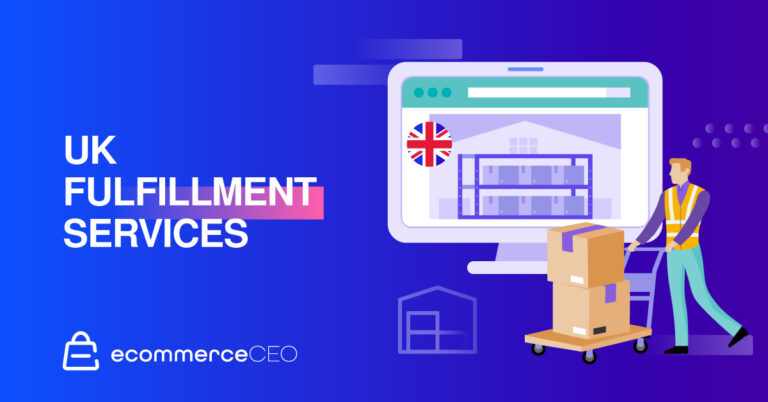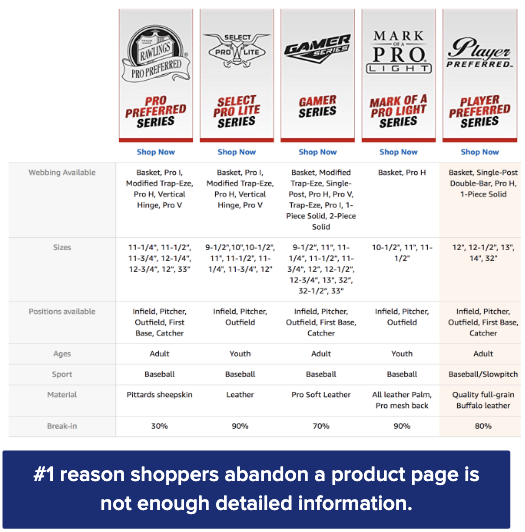Advertising through Amazon can be a great way to get in front of your consumers and drive traffic to your product detail pages (PDP).
Analyzing internal Salsify data, we recently uncovered insights into how the content of your advertisements and your PDPs can affect your traffic, sales, and conversion rates. Using this data, brands can uncover best practices and strategies to win on Amazon.
How to Determine High-Quality Content
The first step in creating winning content on Amazon is defining high-quality content. Create benchmarks for your starting point. For example, internal Profitero data found that products achieve between a 15–58% sales lift by meeting best-seller benchmarks for the category the product belongs to. Adding a video to your PDP can result in a 34% lift in traffic and a 19% increase in PDP conversions, notes Profitero.
Consumers will help define high-quality content as well. Tracking shopper behavior on Amazon’s digital shelf will highlight the content that shoppers need to feel confident in their purchase. One in four Amazon carts is abandoned due to lack of images on the PDP, while one in three is abandoned due to insufficient information.
Consumers that come across poor content are twice as likely to switch brands altogether. The bare minimum is no longer tolerated on the digital shelf.
Finally, Amazon determines what high-quality content is, but they’ll change their mind — a lot. Salsify data found that Amazon changed their Vendor Central requirements 167 times in 2020. “You have to be constantly meeting the changing retailer requirements … it’s not just competition of other sellers, it’s the retailers themselves” says Petteruti.
Brands have to keep up with Amazon to continue winning on their digital shelf. Compliance can be detrimental to your conversions and your search rank on Amazon.
Fixing enhanced content issues on Amazon.com can result in a 46% increase in sales. It’s a similar situation in the U.K., fixing enhanced content issues on Amazon.co.uk can result in a 34% lift in sales, according to Profitero.
Why Good Content Matters
Good content within your PDPs and your ads on Amazon will be a determining factor for your market share. On the digital shelf, market share is defined by your search rank. When customers are searching for “coffee,” is your brand popping up on the first page and how many of your products are occupying the top spots?
Search rank is crucial. According to Search Engine Journal, Amazon data shows that 64% of Amazon shoppers click on one of the first three items displayed on a search page. Even more, 35% will click the first product. Brands need the content that puts their products in the primary position to sell.
It’s important to note that high-quality content can look different depending on the channel in which it exists. What works on Amazon and what works on Walmart may be two completely different types of content. It’s important to test your content on each channel to see what resonates with each audience.
In general, A/B testing can be a powerful tool on the digital shelf. While A/B testing is more challenging on a PDP than it is in other types of marketing, it can lead to a multitude of insights.
Test one factor at a time — there are already so many factors that lead to how you rank and your conversion rates, don’t test multiple things at once. With great tests, you can uncover ways to optimize each PDP — things like what images work well, what videos resonate, optimized title length, and best product content.
Best Practices to Create High-Quality Content
Knowing the steps and best practices to creating high-quality content on the digital shelf can help brands not only create the best content but also create it at scale.
Image quality is essential for your PDPs. High-quality and high-resolution images are a no-brainer. However, the image content matters, too. Be sure to include both product images as well as the packaging and lifestyle imagery as well that highlights product use cases and provides context. Image quality can increase your PDP traffic by up to 28% and sales up to 32%, says Profitero.
When creating images, consider using CGI instead of traditional photography. CGI-created content can showcase how products are made, make lifestyle imagery easier to create at scale, and create 360-degree spins for the PDP. 360-degree spins create a better experience for the shopper and increase conversion rates significantly.
Your Amazon reviews can also lead you to optimize your content. Amazon reviews are some of brands’ most insightful channels to market research. Access to dozens of daily insights into your products can help better your products and the content that describes them. If reviews note that consumers are misunderstanding a part of your PDP, you can make those corrections. If there’s a use case or feature that customers love, you can highlight that even more in the PDP.
Finally, creating this content at scale can be your biggest challenge. Centralizing your product content can help brands accomplish this. A “single source of truth” helps product and ecommerce teams create and edit content in bulk — making your content creation process scalable and reducing time to market.
Additionally, teams can keep up to date easier when retailers change requirements so that PDPs don’t spend time in compliance limbo. A scalable process for your content can help increase conversions on the PDPs both organically and on your paid ads.
In the end, the data you see on your PDPs should be your best friend. See what works, what doesn’t, and optimize your Amazon ads and PDPs to reflect the shoppers’ demands. With great content comes great opportunities — you’ll see more traffic and conversions to your PDP and increased return on ad spend on your Amazon ads.
To learn more about how content fuels your Amazon advertising and PDP performance, check out our on-demand webinar, The Content Advantage in Amazon Advertising.






